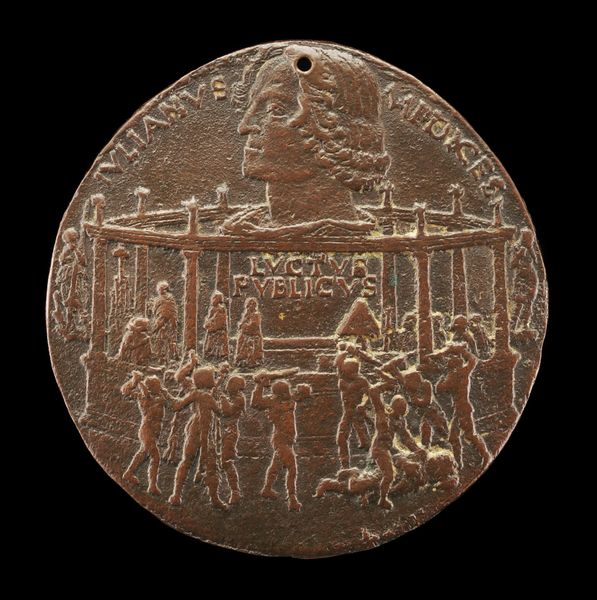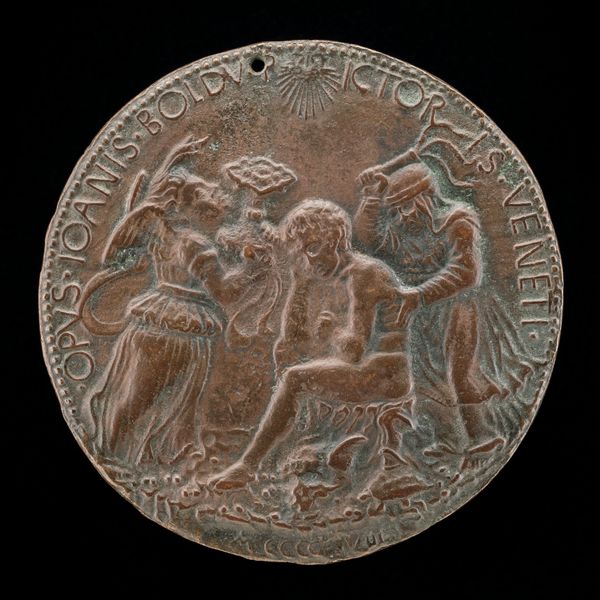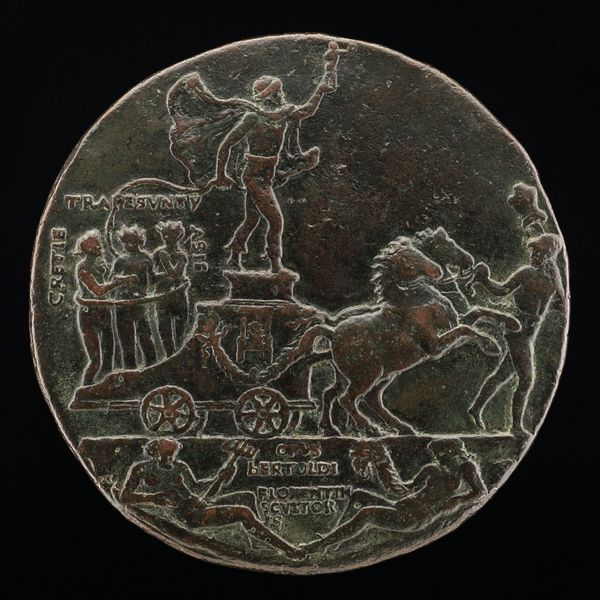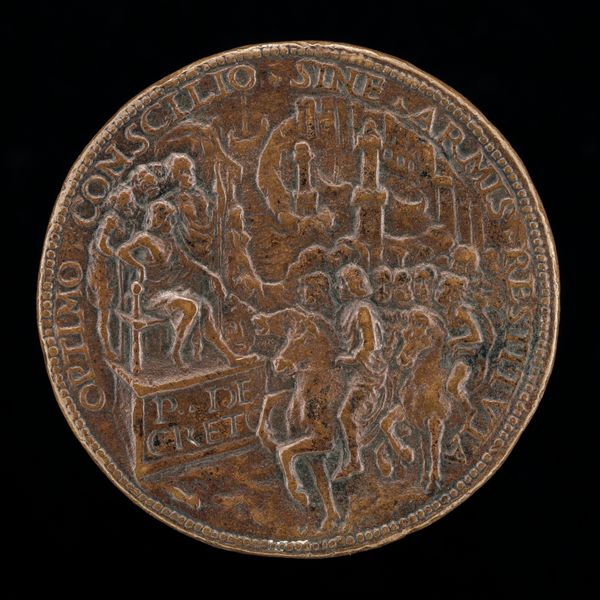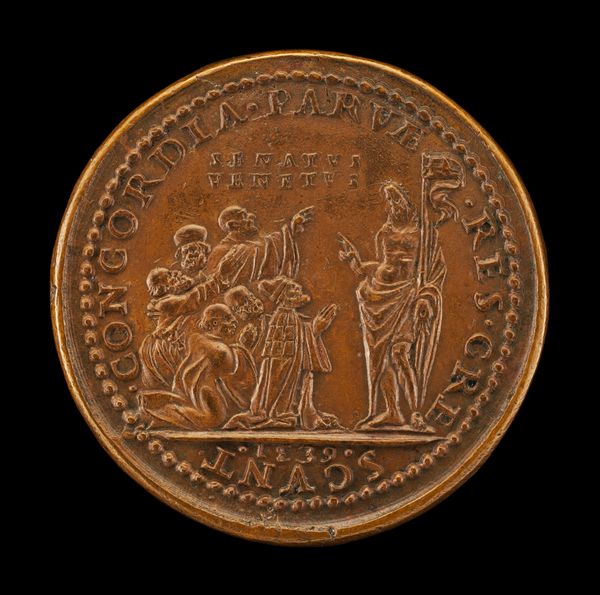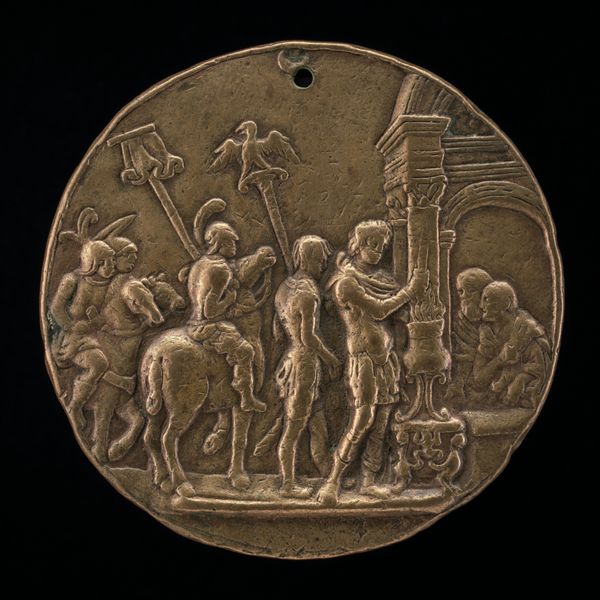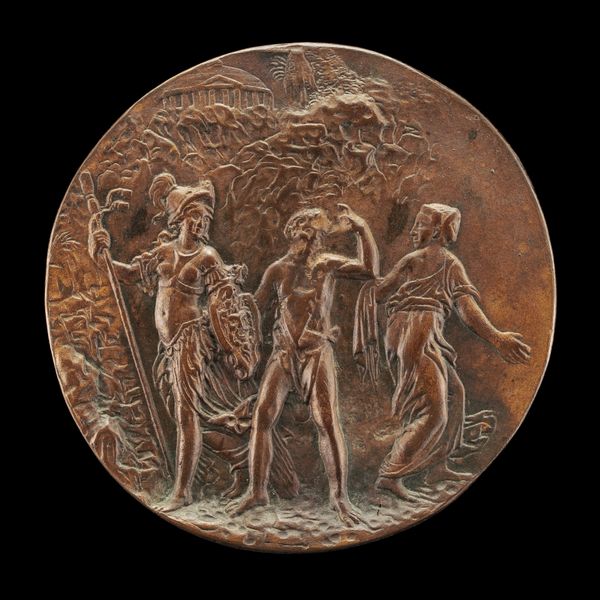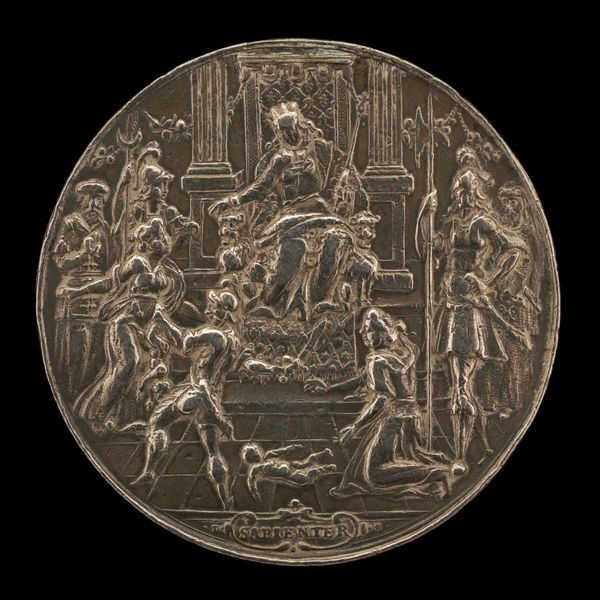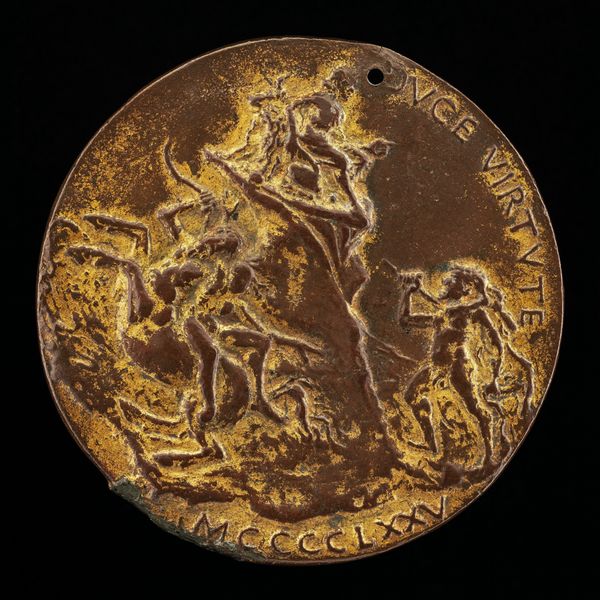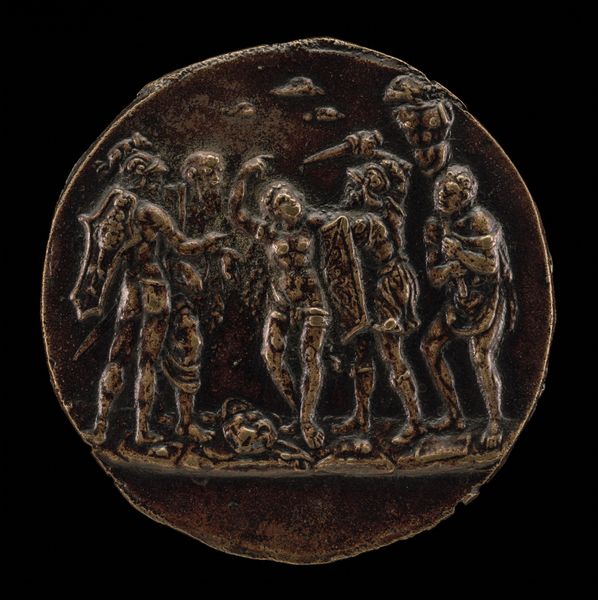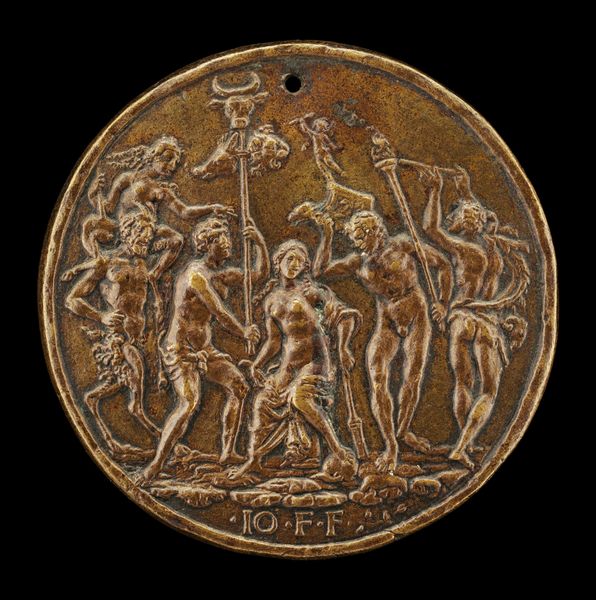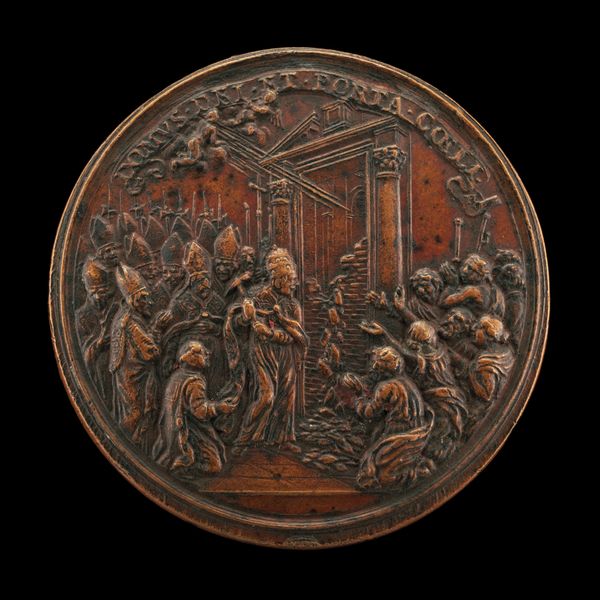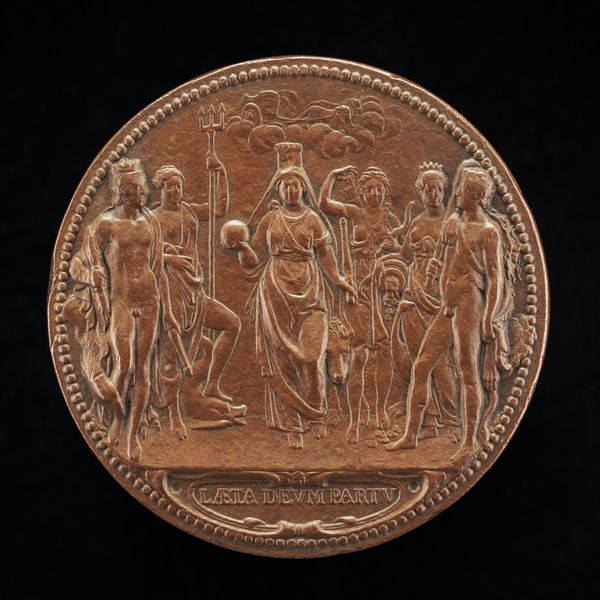![The Murder of Giuliano I de' Medici (The Pazzi Conspiracy Medal) [reverse] by Bertoldo di Giovanni](/_next/image?url=https%3A%2F%2Fd2w8kbdekdi1gv.cloudfront.net%2FeyJidWNrZXQiOiAiYXJ0ZXJhLWltYWdlcy1idWNrZXQiLCAia2V5IjogImFydHdvcmtzLzY3YjFlOTA5LTU5NzQtNDE3OC05NjY2LTFhMzM4NjhkZWUyNC82N2IxZTkwOS01OTc0LTQxNzgtOTY2Ni0xYTMzODY4ZGVlMjRfZnVsbC5qcGciLCAiZWRpdHMiOiB7InJlc2l6ZSI6IHsid2lkdGgiOiAxOTIwLCAiaGVpZ2h0IjogMTkyMCwgImZpdCI6ICJpbnNpZGUifX19&w=3840&q=75)
The Murder of Giuliano I de' Medici (The Pazzi Conspiracy Medal) [reverse] 1478
0:00
0:00
carving, relief, bronze, sculpture
#
portrait
#
medal
#
carving
#
stone
#
detailed texture
#
relief
#
bronze
#
carved into stone
#
sculpture
#
carved
#
history-painting
#
italian-renaissance
Dimensions: overall (diameter): 6.58 cm (2 9/16 in.) gross weight: 74.24 gr (0.164 lb.) axis: 12:00
Copyright: National Gallery of Art: CC0 1.0
Editor: We're looking at a bronze medal, crafted in 1478 by Bertoldo di Giovanni. It’s titled "The Murder of Giuliano I de' Medici," specifically the reverse side, also known as the "Pazzi Conspiracy Medal". My first thought is: It seems incredibly dramatic and packed with…well, maybe a little bit of chaos. What jumps out at you when you see this piece? Curator: You nailed it with the "chaos," because underneath it all lies profound human drama. The top half features a somber profile of Giuliano, frozen in a sort of eternal, regretful observation. Meanwhile, beneath him, you see all this frenzied activity…the figures in the aftermath, perhaps even enacting, the murder. But here's the twist: look at the architecture framing the scene – like the stage for a tragedy – classical, rational, Renaissance ideals literally collapsing around these figures consumed by violence. What do you make of that contrast? Editor: It’s… disturbing, isn’t it? Like a beautiful frame couldn't contain something so brutal. Curator: Exactly! This tension—rationality versus passion, order versus chaos—mirrors the political turbulence of the time, specifically the Pazzi conspiracy to unseat the Medici family. What do you see inscribed at the centre? Editor: It says “LVCTVS PVBLICVS”. Public Mourning? Curator: Precisely! Di Giovanni masterfully used classical composition to explore decidedly un-classical themes. So, is this “Public Mourning,” or is it political propaganda after the failed Pazzi coup? How does the image convince or persuade you of the Medici’s virtues? Editor: Hmmm... good point. It makes you think about how the Medicis controlled the narrative. Curator: Art always carries the spin of its moment. The artist shapes perspective. Even tragedy gets a frame. A Renaissance frame!
Comments
No comments
Be the first to comment and join the conversation on the ultimate creative platform.
